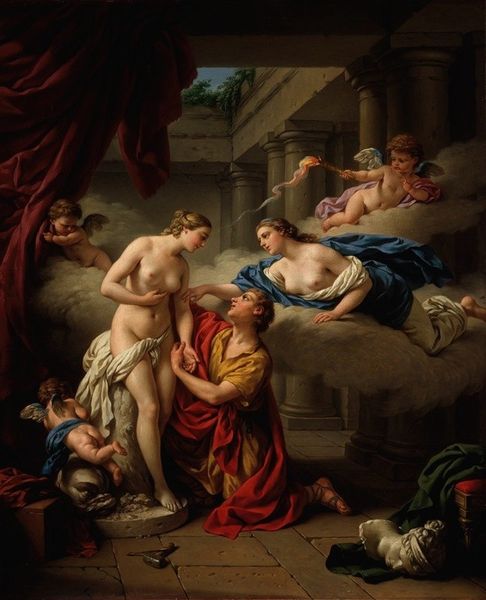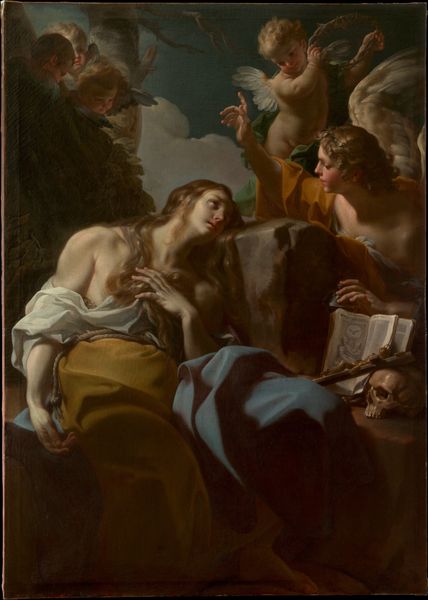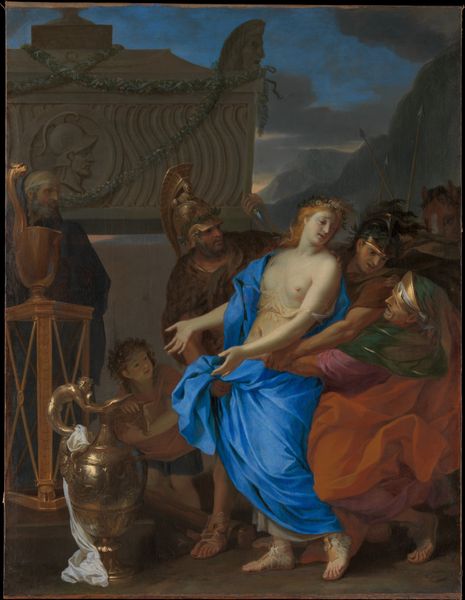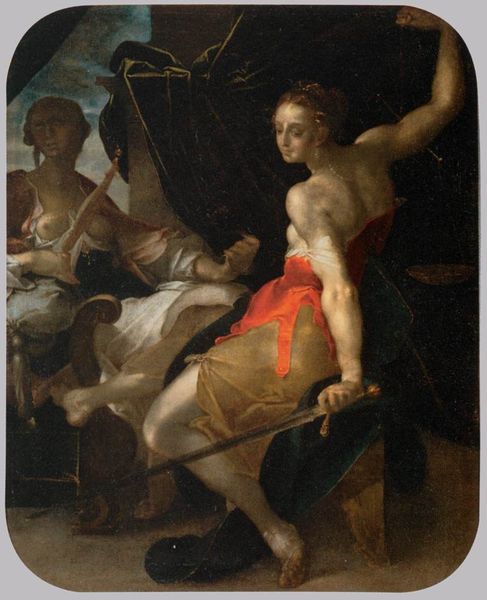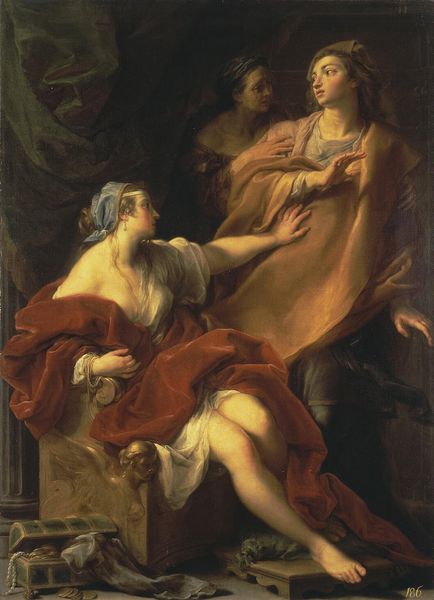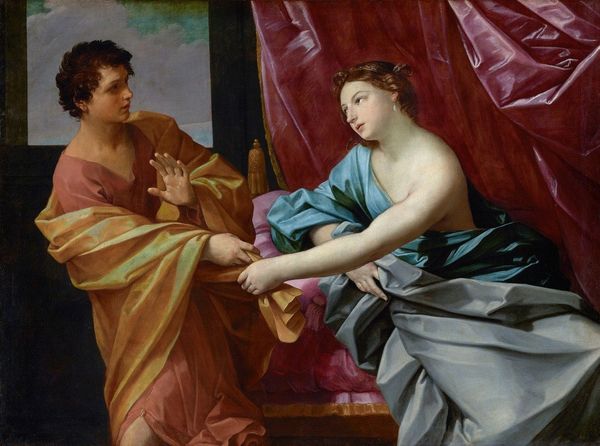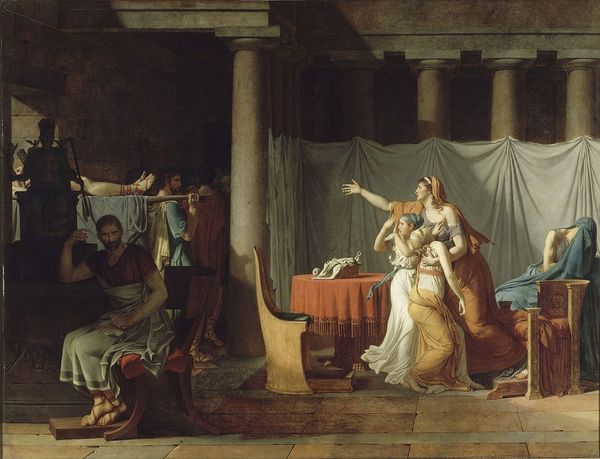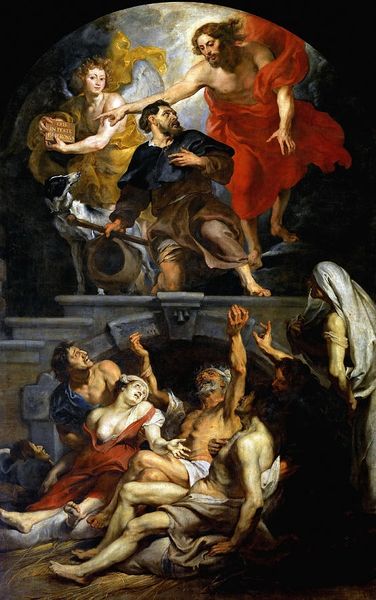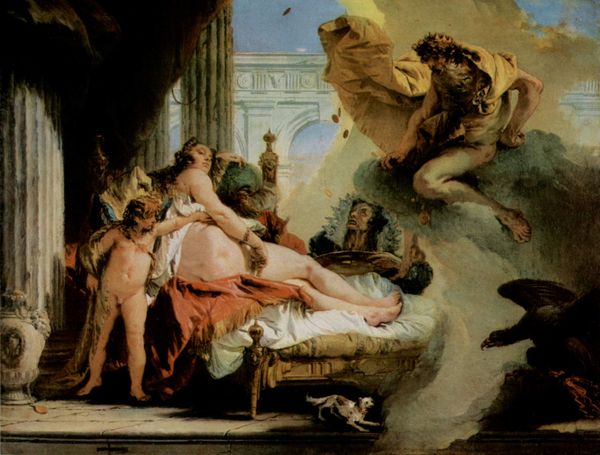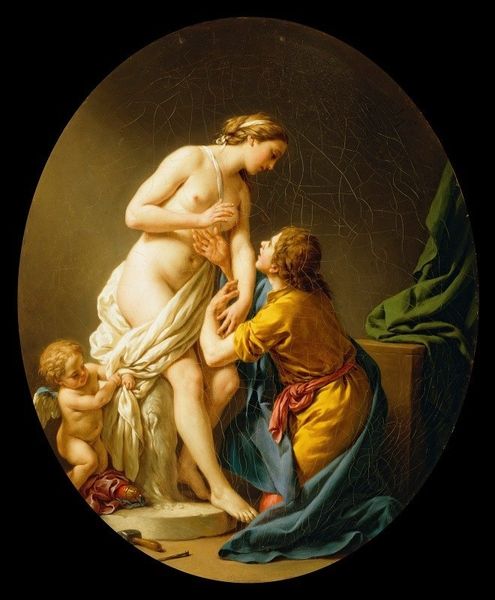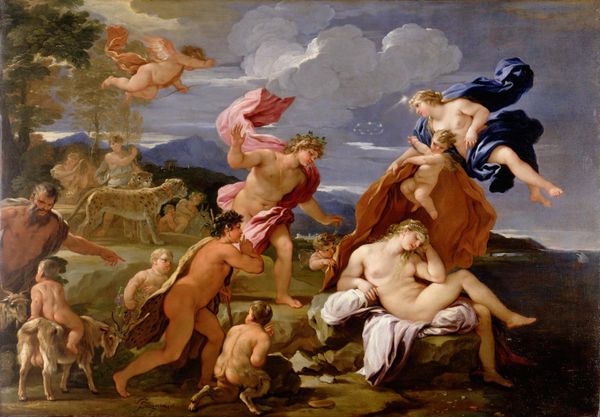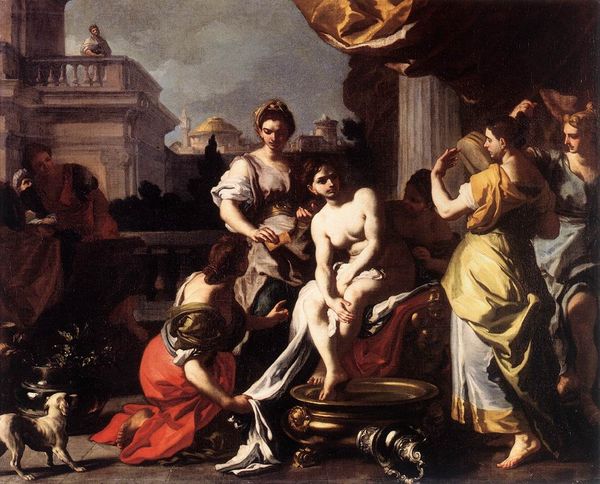
painting, oil-paint
#
allegory
#
baroque
#
painting
#
oil-paint
#
figuration
#
mythology
#
history-painting
#
nude
Copyright: Public domain
Curator: We’re looking at “Rape of Tamar,” painted in 1640 by Eustache Le Sueur. The work is in oil paint and typical of history paintings of this era. What are your initial thoughts? Artist: Wow. There's so much raw emotion pulsing through the scene, right? The colors, particularly that crimson drapery, practically scream. It feels operatic, larger than life, theatrical and turbulent! Curator: Absolutely, and if we consider the theatricality, it's key to understand this work within its socio-political context. Paintings like these were commissions for wealthy patrons. Displaying power through narrative was a huge commodity. Think about how Le Sueur is demonstrating his skills too. He’s handling those oil paints expertly, look at the drape of fabrics, the muscularity, rendering the texture so well. Artist: The level of craftsmanship is mind-blowing! I mean, those folds of fabric feel like you could reach out and touch them. It’s kind of interesting the way the drama is happening among beautiful silks and gold goblets... Talk about high stakes. Curator: Yes, this opulence creates tension, heightening the drama and also reflecting the excesses of the elite. Tamar is part of the court, isn't she? The painting’s visual elements highlight consumption patterns too, if you look at the metallic goblet in the painting, this points at wider access to international resources through growing French trade routes during that time. Artist: I'm struck by Tamar’s face, it’s pale, distraught with eyes open wide in horror. The emotion she holds seems so at odds with Amnon’s stark physicality. But I wonder too how to not separate myself from her story as it exists today. This isn’t just looking at fabric or power; it’s looking at horror. Curator: Indeed, and how that horror might become spectacle. While you focus on the figures, remember to situate Le Sueur’s piece as more than a moral pronouncement or historical record. It’s enmeshed in complex economic and social structures of its day, and what painting could and was supposed to be in early modern France. Artist: Looking at this painting, I'm seeing Le Sueur use his craft to stage these profound emotional contrasts, and these violent contradictions that reflect in the wider world today. This piece resonates far beyond silk or materials; this screams human cruelty and exploitation, even through those lovely silks and gold. Curator: Yes, absolutely. Focusing on process helps us unravel why those contradictions and contrasts might still shock us today. Artist: It’s like those luxurious details whisper of deeper systemic horrors and of stories left untold and often unsung. Powerful indeed!
Comments
No comments
Be the first to comment and join the conversation on the ultimate creative platform.
